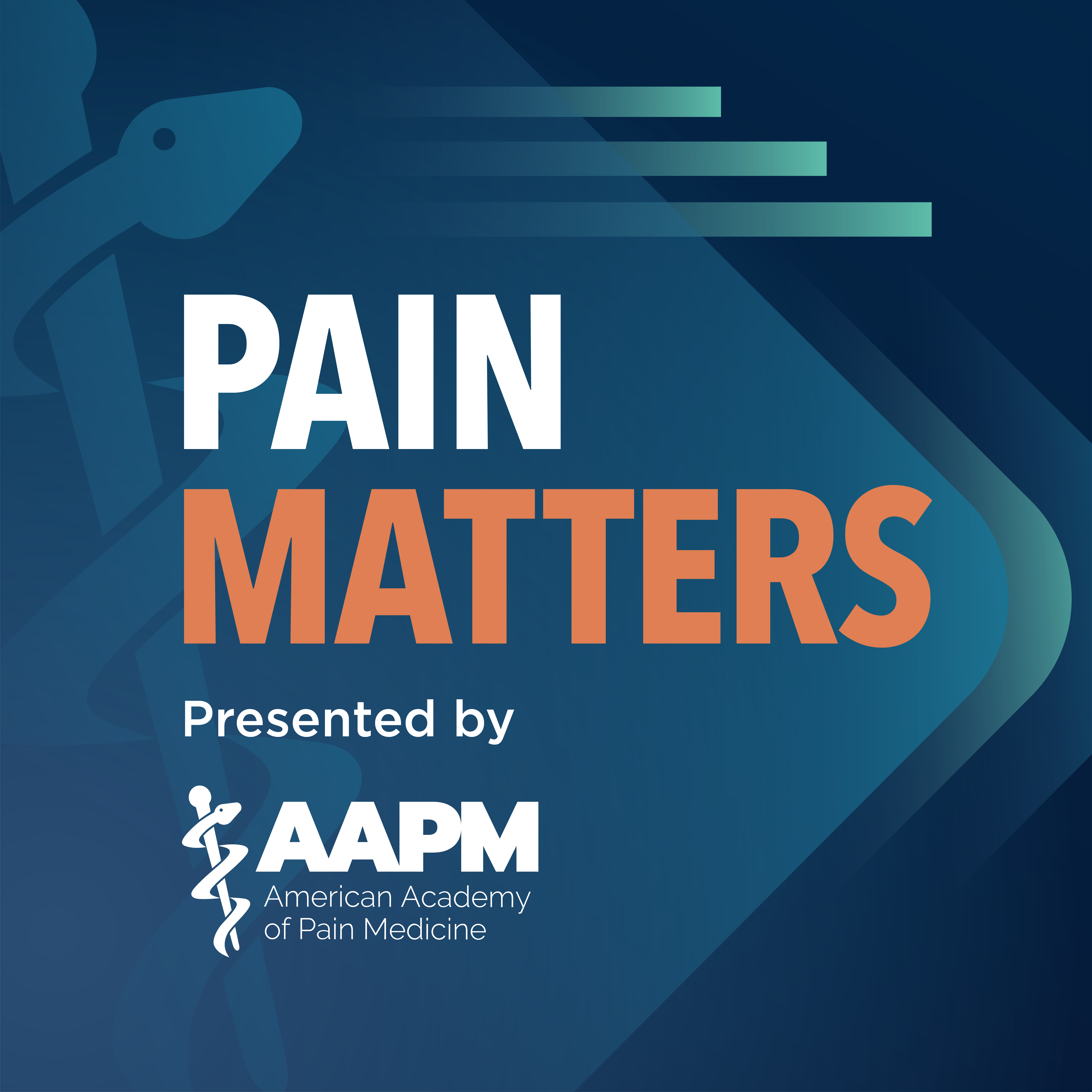Pain is invisible and highly subjective—for physicians, overcoming these barriers requires interpreting the signs of pain through a patient’s actions and words. This can be a delicate process, since the next step a provider takes to relieve a patient’s pain can have long-term effects on their outcome.
Exploring the nuances of patient advocacy, Stephanie Vanterpool, MD, FASA, MBA, Pain Medicine Specialist, Anesthesiologist, and Director of Comprehensive Pain Services at the University of Tennessee Medical Center, has dedicated her career towards strategically empowering patients to advocate for themselves and towards educating clinicians outside of pain medicine to advocate for their patients’ pain.
In this episode of the Pain Matters Podcast, host Shravani Durbhakula, MD, MPH, MBA, and co-host Mustafa Broachwala, DO, are joined by Stephanie Vanterpool, MD, FASA, MBA to discuss how physicians can empower patients by listening to their needs to identify effective pain treatments.
Tune in to discover:
- Approaches clinicians can take to be a better advocates for patients in pain
- What physicians can do to avoid medical gaslighting
- How to balance patient autonomy and evidence-based medicine
- How to address pain in different cultural contexts
References
- Kennel J, Withers E, Parsons N, Woo H. Racial/Ethnic Disparities in Pain Treatment: Evidence From Oregon Emergency Medical Services Agencies. Med Care. 2019;57(12):924-929. doi:10.1097/MLR.0000000000001208
- Todd KH, Samaroo N, Hoffman JR. Ethnicity as a risk factor for inadequate emergency department analgesia. JAMA. 1993;269(12):1537-1539.
- Houghton IT, Aun CS, Gin T, Lau JT. Inter-ethnic differences in postoperative pethidine requirements. Anaesth Intensive Care. 1992;20(1):52-55. doi:10.1177/0310057X9202000110
- Hollingshead, Nicole A et al. “The Pain Experience of Hispanic Americans: A Critical Literature Review and Conceptual Model.” The journal of pain vol. 17,5 (2016): 513-28. doi:10.1016/j.jpain.2015.10.022
- Xu X, Luckett T, Lovell M, Phillips JL. Cultural factors affecting Chinese migrants’ perceptions and responses to cancer pain and its pharmacological management: A convergent mixed-method study [published online ahead of print, 2022 Mar 24]. Palliat Support Care. 2022;1-9. doi:10.1017/S1478951522000360
- Elhakim M, Dexter F, Pearson ACS. US critical access hospitals’ listings of pain medicine physicians and other clinicians performing interventional pain procedures. J Clin Anesth. 2019;58:52-54. doi:10.1016/j.jclinane.2019.05.005
- Eaton, Linda H et al. “Use of Self-management Interventions for Chronic Pain Management: A Comparison between Rural and Nonrural Residents.” Pain management nursing : official journal of the American Society of Pain Management Nurses vol. 19,1 (2018): 8-13. doi:10.1016/j.pmn.2017.09.004
- Chen CH, Tang ST, Chen CH. Meta-analysis of cultural differences in Western and Asian patient-perceived barriers to managing cancer pain. Palliative Medicine. 2012;26(3):206-221. doi:10.1177/0269216311402711
- Ng, Brandon W et al. “The influence of Latinx American identity on pain perception and treatment seeking.” Journal of pain research vol. 12 3025-3035. 8 Nov. 2019, doi:10.2147/JPR.S217866

